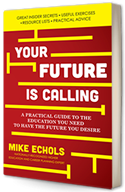Learn Prosper is real. Two out of three jobs available today require some form of learning credential. There are millions of job opportunities every month. The overwhelming majority of those opportunities require that you have education credentials to even be considered. The BUZZ Today has the data. The analysis is in the body of this post.
 Source: US Bureau of Labor Statistics There were 4.0 million job openings in December 2013 and there were 4.4 million hires in December 2013. This makes a total of 8.4 million opportunities to find a new job or career in one 30 day period at the end of 2013.
Source: US Bureau of Labor Statistics There were 4.0 million job openings in December 2013 and there were 4.4 million hires in December 2013. This makes a total of 8.4 million opportunities to find a new job or career in one 30 day period at the end of 2013.
The argument is over education in the future. There is a lot of debate about whether the forecasts for future jobs are real or not. The Lumina Foundation has a big goal: “To increase the proportion of Americans with high-quality degrees and credentials to 60% by the year 2025”. Another forecast of the demand for degree credentials comes from the highly regarded Georgetown University Center for Education and the Workforce which forecasts that the decade growth ending in 2018 will create 47 million new job openings. Of those new jobs, the forecast is for nearly two-thirds of them to require some post-secondary education.
Recently, some have argued that the value of an education is overstated and that forecasts of future labor demand are flawed. Much of this argument is entangled with the fact that higher education has become too expensive. This fact is true. Higher education in America has become too expensive. But this is a different issue than whether labor markets demand an education.
The BUZZ Today data shows that there are millions of positions available in the labor markets today – 8.4 million opportunities last December alone to be precise. The jobs are there. What you need to know is what it takes to qualify. Here additional information is valuable.
The massive job posting service Monster.com has studied the mix of current job postings on their web site. What they found is that 60% of those postings required a bachelor degree or above. This is data on the job market today, not some contested forecast about future labor market conditions.
There is one additional fact that you need to know about this issue of career opportunities and education. Companies are receiving massive numbers of resumes for every position. To handle this very real challenge, most large companies use resume screening software to qualify job applicants. If your resume does not match the key words and qualifications of the job posting you will not get an interview. The bottom line is that for the vast majority of the millions of job opportunities you must have a degree credential to even be considered for the position. Without the credentials, it is extremely unlikely that you will be invited to interview.
The main conclusion is that an education vastly increases your chances for a new career. For personal guidance on how to most efficiently obtain that education, go to Your Future is Calling. The book is full of helpful guidance on linking “who you are” to careers and the education path you need to get to the future you desire.
